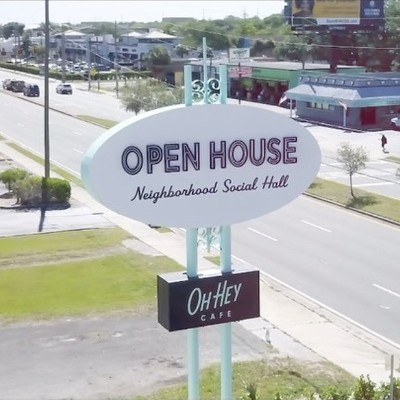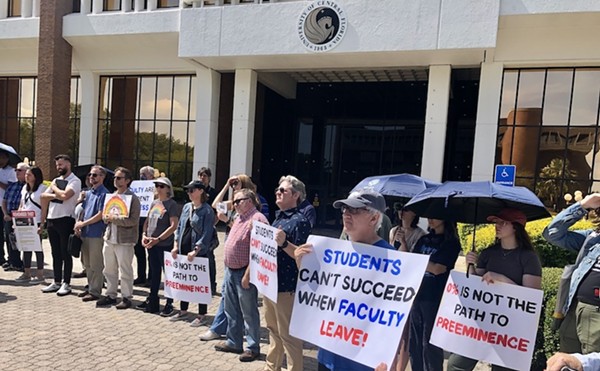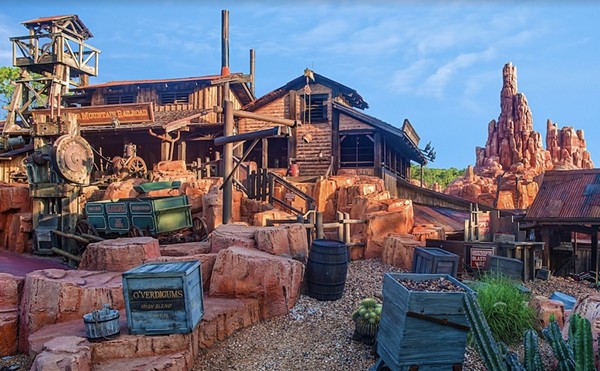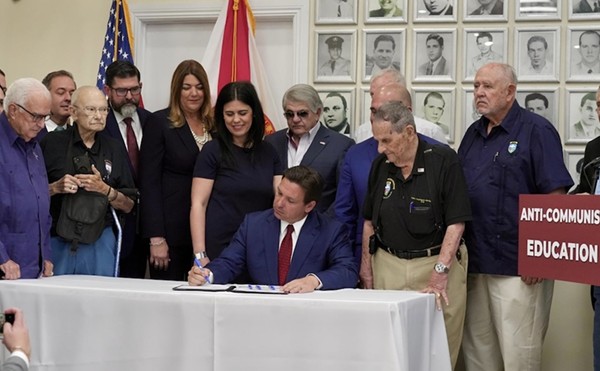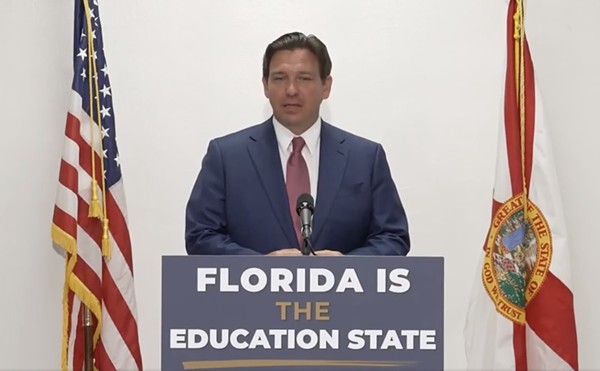The operator of Orlando's late-night dance club attacks those who would stop the music All his life, Jon Marsa has been preparing himself to operate The Club at Firestone. But nothing could have prepared him for this. For the past two years, Marsa has paid a price for his place as Orlando's preeminent proprietor of late-night dance. The Club, located in a former Firestone tire store on Orange Avenue just north of downtown, has been the focus of investigations by state liquor authorities and Orlando police. New state legislation limiting the promotion of all-night dance parties, known as raves, would have little impact in Orlando, except on Marsa's business. Ultimately, The Club will bear the brunt of any reaction by Orlando City Council to recommendations by Mayor Glenda Hood's Rave Review Task Force. Through it all, Marsa has been relegated to the sidelines. Though subject to heightened scrutiny, his contributions have been limited to responding to questions posed by authorities, lawmakers and members of the mayor's task force. In this interview, Marsa tells his side of the story. He accuses politicians and city leaders of taking advantage of anti-rave sentiments, while refusing to face the real issues. And he blasts the media for exaggerating drug problems particular to the late-night scene. 'I'm extremely frustrated at the misrepresentations by the press and misunderstanding of the problem,' he says. Born in upstate New York, Marsa left home at 17. In Miami, he built a series of businesses which helped him develop some of the capital he would need to form the partnership with Jan Harrold, a club owner in Miami, with whom he would open The Club in June 1993. Before moving to Orlando, Marsa, 34, also found time to travel the world, including a six-month sail from Miami to Grenada, stopping in some of the world's most exotic ports of call. Although, 'I find drunks and cigarettes repelling,' Marsa says he spent much of his time on land hanging out in clubs in London, Berlin, Switzerland, Holland, Italy and the Caribbean, as well as stateside in New York City. 'I saw a good part of the world. I've seen all the best clubs,' he says. 'I find them fascinating for how they work. What makes a club work.' With support from Harrold, who owned Cheers night club in Miami, a second mortgage on his home, and loans from family and friends, Marsa built The Club at Firestone, as his vision of the perfect metropolitan-style dance club. Opened as a gay club, Marsa decided, after a year, to attempt to attract more of the heterosexual market, while appeasing his established customers, largely hospitality workers at Disney and other attractions. In Orlando, 'You have both ends of the spectrum and wild diversity.' Marsa saw the potential for an exciting mix of customers and moved to fill the niche. Promoters were increasingly holding raves around Orlando. By using venues without liquor licenses, they could avoid law enforcement. 'They were beginning to take a good chunk out of my revenue,' Marsa says. The Club began bringing nationally recognized disc jockeys to town to perform at all-night events, some which kept The Club rocking until 9 a.m. 'It was financially viable. It added to the mystique,' Marsa says. While boosting business and attracting international attention, The Club also began to make enemies at City Hall and within the community. Worlds collided as young ravers emerging from the all-night parties crossed paths with elderly couples and young families on the way to church. Marsa also blames reports by the Orlando Sentinel of the growing popularity of heroin, 'which has nothing to do with night clubs.' As a depressant, heroin is unpopular among the dance crowd, Marsa explains. 'You don't go to a nightclub to wind up on a couch.' At the same time, Marsa acknowledges his customers use the synthetic drug Ecstacy and other narcotics, including cocaine, which heighten feelings of euphoria and excitement. Having instituted tough policies and tight security, Marsa says the level of drug use is as controlled as possible and no worse than anywhere else in America. Rather than ban the parties, Marsa suggests leaders recognize the value of confining them to his club, where security and emergency workers can be summoned when necessary. 'Don't they have a right to have some place to go?' he asks. 'I'm responding to a demand, and I'm doing it responsibly.' Marsa says the law will drive ravers, most in their late teens or early 20s, underground and into unregulated venues. 'It's going to go some place more dangerous,' Marsa says. Late-night dance promoters are finding it more difficult to secure venues for the shows. A late-night dance, called Fusion, scheduled for this weekend at the Florida State Fairgrounds h has been canceled and Ticketmaster is offering full refunds. While citing the promoter's inability to secure liability insurance, Doug Smith, events coordinator at the fairgrounds, was clearly concerned about the promoter's assurances that the event was a dance, rather than a rave. 'Walk like a duck. Talk like a duck. You're not an apple,' Smith says. Likewise the Central Florida Fairgrounds will no longer serve as the location of the late-night dances, officials said. Rather than recognizing the need for a safe alternative to forcing raves back underground, Marsa accuses politicians of trying to 'make some points' by reacting to anti-rave hysteria. Through the work of Marsa's lobbyist, the rave bill passed recently by the Florida Legislature was amended to allow cities and counties to set their own standards. (Also excluded from the law's midnight to 7 a.m. prohibition are amusement parks, resorts, and anything within five miles of the attractions.) But the law clearly indicates a statewide anti-rave sentiment, fueled by TV specials and other media reports. The future of raves at The Club and elsewhere in Orlando will be decided by City Council, which will look for direction from the mayor's task force. On May 29, the group will begin working toward consensus using a proposal recommending that City Council allow nightclubs to stay open until 5 a.m. Also, in six months, police would report on progress made toward reducing drug use at the late-night parties. While such a compromise might seem reasonable, Marsa refuses to acknowledge the need for any change. 'Is there really a problem? I haven't seen it. I'm the one providing the safe environment. I'm not the enemy.' Estimating only five of 17 task force members understand the issue, Marsa singles out several for criticism: In urging for action at the May 13 meeting, the Rev. Bill Montgomery of Downtown Baptist Church, said, 'The largest industry downtown is our churches.' Marsa responds:'I'd like to know what his God would think of him calling his church an industry.' Marsa also wonders if Craig Mateer of City Lights Valet might be part of the opposition because he lost out on The Club's parking contract and whether Ray Stines of Jani Lane's Sunset Strip, was still upset at Marsa's put-downs about rock-and-roll music. During the last meeting, member Art Cole repeatedly emphasized the mayor expects the group to offer a solution to drug problems. Marsa wonders: 'Are they doing something because they have to do something, or because it's the right thing?' The fate of Marsa's business — at least the late-night portion — is riding on the city's reaction. But for the time being, business, he says, 'has never been better.' Attributing his response to Kiss guitarist Ace Frehley, Marsa concludes, 'I don't care what they're saying, as long as they're saying it.'

WE LOVE OUR READERS!
Since 1990, Orlando Weekly has served as the free, independent voice of Orlando, and we want to keep it that way.
Becoming an Orlando Weekly Supporter for as little as $5 a month allows us to continue offering readers access to our coverage of local news, food, nightlife, events, and culture with no paywalls.
Scroll to read more Orlando Area News articles
Newsletters
Join Orlando Weekly Newsletters
Subscribe now to get the latest news delivered right to your inbox.


